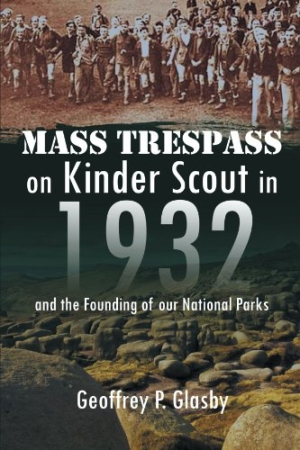Mass Trespass on Kinder Scout in 1932
And the Founding of Our National Parks
Few Americans have heard of the 1932 mass trespass of Kinder Scout in England, but that peaceful act of civil disobedience is legend in the United Kingdom. It marked the start of a process to open vast tracts of privately owned moors and mountains to the public, and it is rightly honored as the catalyst that brought about the creation of national parks in Great Britain.
Geoffrey P. Glasby’s Mass Trespass on Kinder Scout in 1932 provides only the bare bones of the story. Hardly longer than an article in *National Geographic* or a hiking magazine, it does give the basic facts of what happened that day and why more than five-hundred people gathered for a day-long walk across the Derbyshire Peak District eighty years ago. For the working poor of that time, as Glasby explains, “rambling” about in the open air was one of the few recreations they could afford, and it offered a coveted opportunity to get out of the crowded, dirty, smog-choked cities of the era.
The trespass was more than just a grand walk in the wilderness, however. It was an act of defiance, a stand against a privileged class whose armed gamekeepers would use force to keep common people from entering lands reserved for that “hobby of the rich” known as grouse shooting—a hobby they enjoyed rarely more than ten days out of the entire year. Glasby only scratches the surface of that time and the movement it inspired, and while he leaves the reader hungry for more, his bibliography points to books that will provide a proper and filling meal.
Though his prose is spare, Glasby writes with emotion and reverence for those who took part in the great hike of 1932. The ramblers’ movement in Britain began in earnest with that march, and walking clubs abound in the Kinder Scout area to this day. Even in the United States, British transplants tend to form walking clubs to go “rambling” about in America’s parklands. They are the unofficial heirs of those who marched up the peak at Kinder Scout.
Glasby devotes only about a third of his book to the 1932 occupation of the peak, to the reaction of the police in the days that followed, and how the event continues to be honored annually. The rest of his work is devoted to a variety of related topics such as “Ramblers Best Walks in Britain” and “Romans in Britain,” the latter about ruins found in national parks.
A map of Kinder Scout, perhaps showing the route of the march, would have been helpful, especially to those unfamiliar with the event or the region. The author provides a few grainy photographs of the 1932 march and some slightly clearer pictures of the area today. Unfortunately, the black-and-white photos do not do justice to the moors, valleys, and hilly peaks upon which five hundred brave and righteous men, women, and children walked to ensure that the wild beauty of such places could be enjoyed by all.
Reviewed by
Mark McLaughlin
Disclosure: This article is not an endorsement, but a review. The publisher of this book provided free copies of the book and paid a small fee to have their book reviewed by a professional reviewer. Foreword Reviews and Clarion Reviews make no guarantee that the publisher will receive a positive review. Foreword Magazine, Inc. is disclosing this in accordance with the Federal Trade Commission’s 16 CFR, Part 255.

